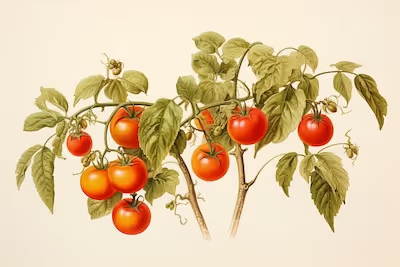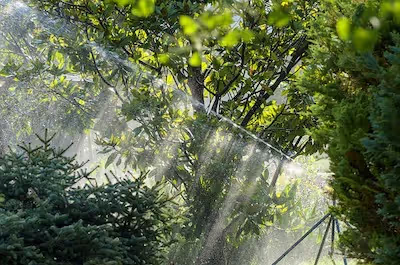Regenerative Agriculture: 7 Sustainable Gardening Practices

Regenerative Agriculture
Adopting regenerative agriculture nourishes soil health, boosts biodiversity, and protects water resources. Practices like composting, cover cropping, and reduced tillage transform gardens into thriving ecosystems. Discover how seven simple steps can help your garden flourish naturally while healing the land beneath your feet.
🌿 Regenerative Gardening Cheatsheet: 7 Sustainable Practices 🌿
🌱 Build Healthy Soil
- 🐛 Compost regularly: Replenish nutrients, improve soil structure.
- 🍄 Mulch beds generously: Protect soil moisture, suppress weeds, moderate temperature.
🌼 Companion Planting
- 🐞 Pair beneficial plants: Marigolds repel pests; beans fix nitrogen.
- 🌻 Enhance plant diversity: Reduce disease, attract pollinators.
💧 Water Efficiently
- 💦 Drip irrigation: Reduce water usage by up to 50%.
- ⏲️ Early morning watering: Minimize evaporation, boost absorption.
♻️ Encourage Biodiversity
- 🐝 Plant native species: Invite local pollinators, increase yields.
- 🐦 Provide wildlife habitats: Birdhouses, bee hotels, hedgerows.
🌾 Minimize Soil Disturbance
- 🚫 No-till gardening: Preserve soil structure, reduce erosion.
- 🍂 Cover crops: Protect soil, enrich fertility.
🧑🌾 Rotate Crops Annually
- 🔄 Plan crop rotation: Prevent nutrient depletion, disrupt pest cycles.
🍅 Save & Share Seeds
- 🌱 Collect heirloom seeds: Preserve plant traits, promote self-sufficiency.
- 🤝 Community seed exchanges: Strengthen local food security.
1. Practice Minimal Soil Disturbance
I learned the hard way that frequent tilling wreaks havoc on my garden's natural balance. Soil, alive with countless microorganisms, thrives on stability and calm.
I traded the rototiller for a garden fork, gently loosening the soil only when needed. This subtle approach protects beneficial fungi and microbes, boosting soil fertility naturally.
2. Compost Religiously
The humble compost pile transformed my garden. Once kitchen scraps and yard waste became rich, dark humus, my vegetables flourished.
Composting recycles nutrients, reduces waste, and nourishes the soil without chemicals. Consider compost your garden's favorite meal.
3. Cover Crops Are Your Allies
Last autumn, I sowed a simple mix of crimson clover and hairy vetch after harvesting tomatoes and peppers. Throughout winter, the cover crop blanketed and protected my soil, reducing erosion and weed invasion.
Come spring, legumes fixed nitrogen naturally, gifting my upcoming crops vital nourishment for vigorous growth.
4. Introduce Biodiversity with Companion Planting
I love planting marigolds near tomatoes and basil alongside peppers. This intentional pairing attracts beneficial insects, reduces pests, and minimizes reliance on pesticides.
Diverse planting strengthens gardens against disease, creating vibrant ecosystems bursting with life and flavor.
5. Mulch Generously
In July heatwaves (95°F/35°C), my garden used to wilt. Then, I started heavy mulching with straw, leaves, or wood chips to seal in moisture and cool root zones.
This basic habit conserves water, suppresses weeds, safeguards microbial life, and reduces garden maintenance significantly.
6. Sustainable Water Management
During hot, dry spells, catching rainfall becomes essential. Setting up rain barrels was simpler and cheaper than I anticipated, allowing me to reuse collected rainwater instead of relying solely on municipal sources.
Drip irrigation also transformed watering efficiency, focusing hydration directly where plants need it most, minimizing waste radically.
7. Foster Habitats for Pollinators
I once overlooked bees, butterflies, and birds as mere beauty. However, creating pollinator habitats—wild patches, flowering herbs, native plants—proved invaluable for garden productivity.
Healthy pollinator populations mean healthier harvests. Plus, gardens buzzing with life soothe the soul.
"Every bite we take from gardens managed regeneratively cultivates not only health on our plates, but healing in the earth beneath our feet." — Charles Massey
Adopting regenerative agriculture transforms gardens into dynamic ecosystems, abundant with nutrition, flavor, and vitality. Give these tips a try and watch your garden thrive sustainably and deliciously.
Frequently Asked Questions About Regenerative Agriculture Practices
How does regenerative agriculture benefit my garden soil?
Regenerative agriculture rebuilds organic matter and enhances microbial activity. Applying compost and cover cropping methods naturally enriches the soil, improving fertility, structure, and moisture retention, and reducing reliance on chemical fertilizers.
What are effective cover crop choices for my sustainable garden?
Select beneficial cover crops such as clover, peas, rye, or alfalfa. These plants fix nitrogen naturally, control erosion, suppress weeds, and enhance microbial diversity, creating healthier soil ecosystems.
Can regenerative methods manage garden pests naturally?
Yes, practices within regenerative agriculture encourage ecosystem balance and attract beneficial insects. Incorporating native plants, rotating crops, and promoting biodiversity helps naturally control pest populations without chemical intervention.
Should I till my garden soil when using regenerative practices?
Avoid frequent deep tillage, since it disrupts beneficial soil organisms and soil structure. No-till or minimal tillage techniques, combined with regular mulching and compost applications, protect and stimulate healthy soil biology.
How often should compost be applied in regenerative gardening?
Apply a layer of compost approximately once or twice per growing season, typically about a half-inch to one-inch (1 to 2.5 cm) thick. Compost enriches nutrients, maintains healthy microbial communities, and sustainably nourishes plant growth.
Does regenerative gardening conserve water?
Yes, adopting mulching, cover cropping, and improved soil structure significantly reduces water runoff and increases moisture retention. These methods decrease irrigation demands, making gardening sustainable even in drier climates.
Do regenerative techniques support pollinators and local wildlife?
Absolutely. Planting native flowering plants, creating diverse habitats, and using no chemical pesticides actively attracts pollinators and beneficial wildlife. These methods support ecological health, promoting a sustainable garden ecosystem.
Regenerative agriculture is a quiet revolution—soil-first wisdom gardeners have known intuitively for generations. Adopting practices like no-till methods, nurturing beneficial microbes through organic matter, and planting diverse cover crops rebuilds health below ground, translating to abundance above. By composting diligently, reducing chemical reliance, and skillfully rotating crops, gardeners become stalwarts in restoring ecological balance. Each decision echoes profoundly, making your garden a living example of care and longevity. With a mindful approach to gardening, regenerative agriculture pays back in flavor, beauty, and bounty—for gardens, for planet, and all who savor its rewards.
Find out which plants will thrive in your garden!
Answer a few fun questions and get custom plant recommendations perfect for your space. Let’s grow something amazing together!

start your season





